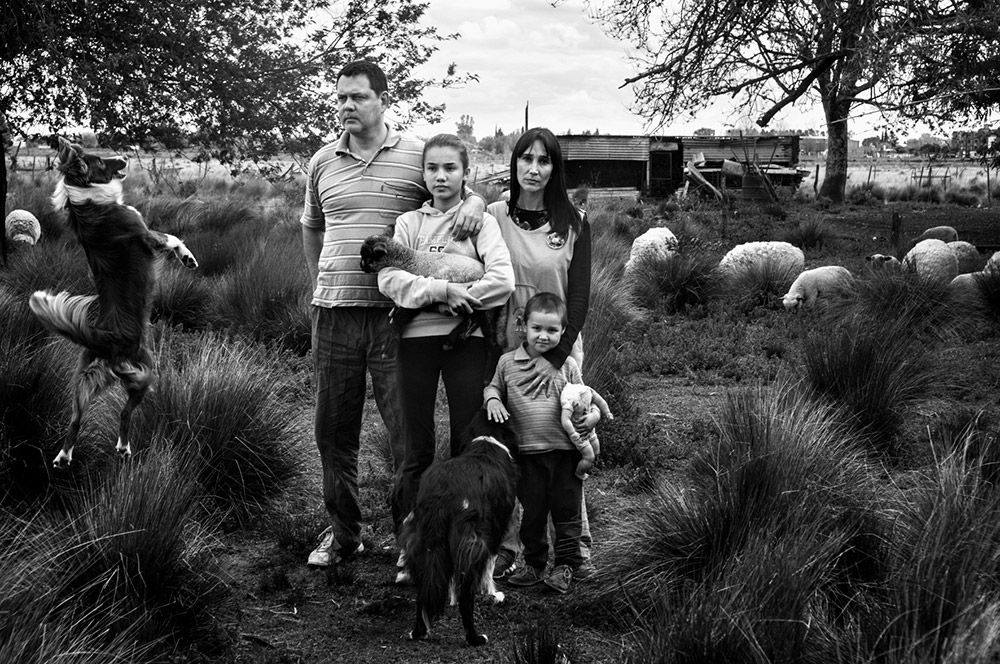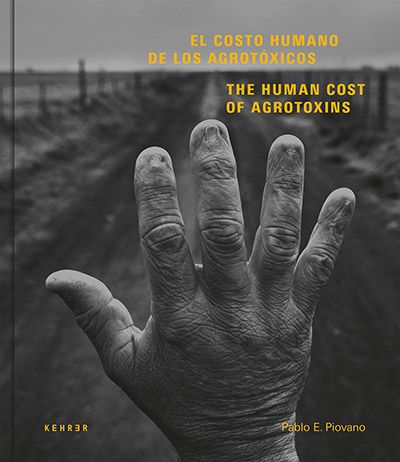blog
Book Review: The Human Cost of Agrotoxins by Pablo E. Piovano

09/25/2015 Firmat, Santa Fe province. The Fontanellaz family lives surrounded by fields exposed to constant fumigations. Edgar made 34 judicial complaints. He was attacked twice with gunfire at his home by soybean farmers. His two sons were born with hearing loss.
This tome documents the catastrophic consequences of inconsiderate use of agrotoxins by Monsanto in the Northeast of Argentina over twenty years, mainly congenital malformations. But there are also other kinds of sufferings that are not readily visible: miscarriages and cancer, as photojournalist Pablo E. Piovano, born 1981, states.
Unsurprisingly, most media rarely write about it. “Silence was what made most noise. So I decided to go out and document on my own to know what was happening to the health of the people living in the fumigated villages,” writes Pablo E. Piovano.
In other words: “The Human Cost of Agrotoxins” is classic documentary and this means: to go out into the world, to confront yourself with what is out there – and then tell us about it, with pictures, and with words. And this is precisely what Pablo E. Piovano did. Moreover, he did what journalists usually do: he talks to people, looks for knowledgeable folks and conducts interviews.

12/07/2014 Colonia Alicia, Missiones province. Lucas Techeira is five years old and was born with an incurable disease called ichthyosis lamellar, caused by a gene mutation. His parents worked in a tobacco field and other plantations in the area where agrochemicals such as glyphosate and 2,4-D, one of the components of Agent Orange, are sprayed.
One of these interviews, conducted by Jan-Christoph Wiechmann, presently a correspondent in Latin America for the German magazine “STERN,” can be found in this book. The interviewee, Fabián Tomas, whose lungs are failing and whose muscles have disappeared, says that Monsanto, Bayer and all the others just talk about jobs. And he asks: “But what kind of jobs are these? And what did they do to this beautiful diverse landscape? Now it is all just monoculture and all the bugs and birds and butterflies are killed by massive machines; planes that spray the poison from above. I can’t believe that the most intelligent generation of human beings that ever existed has forsaken our values.” But what about the industry who says that it is not harmful to humans?, asks Jan-Christoph Wiechmann. Fabián Tomas responds: “Nobody knows how these millions of toxins that sink into the ground are affecting our health. There are no long term studies. Scientists from the University La Plata visited Basavilbaso. They found the poison in our water and in the air. Here in Argentina we were the laboratory for agri-business and the chemical industry ever since Monsanto entered the country under suspicious circumstances in 1996. Now there are thousands of victims.”
Yet there is also resistance, the movement of The Mothers of Ituzaingó, for instance. Patricio Eleisegui portrayed them for this book in which are also informative texts by Carlos Rodriguez (“We Just Miss the Happiness of Being Healthy”), Damián Marino (The Cry of the Invisibles), Darío Ananda (A Massive Experiment), and Wendy Watriss (Inconvenient Thoughts: Agent Orange and Other Chemicals).

12/11/2014 Fracrán, Missiones province. Jessica Scheffer is 14 years old and has a genetic mutation
The photos in this tome do what good photos always do, they make you pause. And, they make your thoughts wander and create other pictures in your head that illustrate the stories behind the pictures. It feels weird and disturbing to spend time with these photographs not least because I once travelled for weeks by bus through this part of Argentina without knowing anything about these things. Once again I was reminded of the old truth: we can only see what we know.
Guillermo Saccomanno, in his introductory text, asks himself whether “Pablo E. Piovano’s photos are art in themselves, or denunciation.” It is not a question that occurred to me but then again, it is pretty different what photos trigger in different minds. Saccomanno also felt reminded of Vietnam – and this I share. What I also share is his reference to the results of capitalism. “The capitalist reason, seeking profit from nature has, in fact, created that deformed girl crawling and those children with hydrocephalus and mental retardation.”
“The Human Cost of Agrotoxins” is a necessary and important book.

The Human Cost of Agrotoxins
El Costo Humano de los Agrotóxicos
by Pablo E. Piovano
Kehrer Heidelberg 2017
For more info and to purchases: https://www.kehrerverlag.com/en/pablo-e-piovano-the-human-cost-agrotoxins-in-argentina
Location: Online Type: Book Review
Events by Location
Post Categories
Tags
- Abstract
- Alternative process
- Architecture
- Artist Talk
- artistic residency
- Biennial
- Black and White
- Book Fair
- Car culture
- Charity
- Childhood
- Children
- Cities
- Collaboration
- Community
- Cyanotype
- Documentary
- Environment
- Event
- Exhibition
- Faith
- Family
- Fashion
- Festival
- Film Review
- Food
- Friendship
- FStop20th
- Gender
- Gun Culture
- Habitat
- Hom
- home
- journal
- Landscapes
- Lecture
- Love
- Masculinity
- Mental Health
- Migration
- Museums
- Music
- Nature
- Night
- nuclear
- p
- photographic residency
- Photomontage
- Plants
- Podcast
- Portraits
- Prairies
- Religion
- River
- Still Life
- Street Photography
- Tourism
- UFO
- Water
- Zine

Leave a Reply